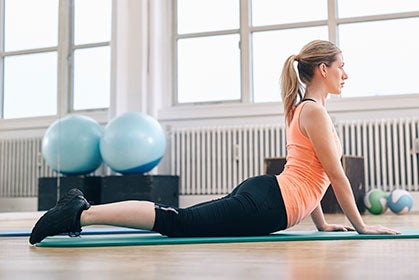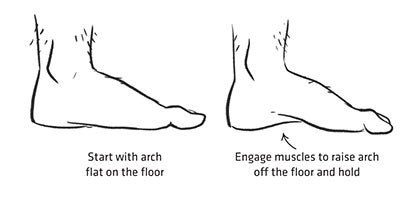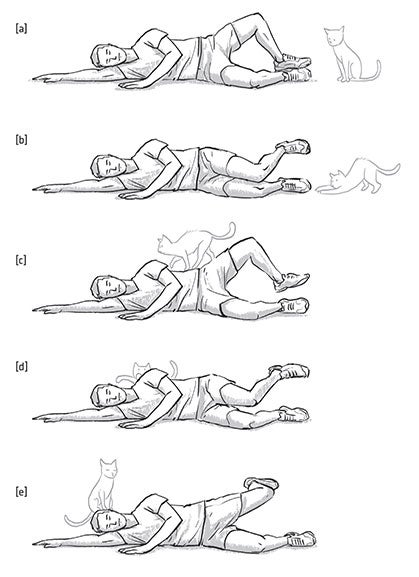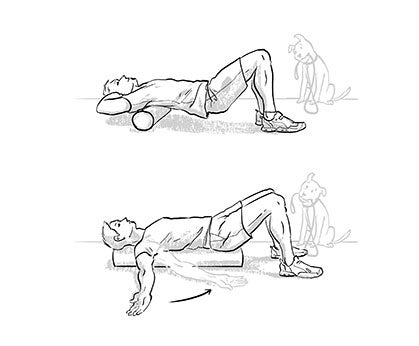New perk! Get after it with local recommendations just for you. Discover nearby events, routes out your door, and hidden gems when you sign up for the Local Running Drop.
Build full-body strength with these three workouts, excerpted from Trailhead by Lisa Jhung

iStockPhoto.com
Republished with permission of VeloPress from Trailhead: The Dirt on All Things Trail Running by Lisa Jhung with illustrations by Charlie Layton. For more, visit velopress.com/trail.
Being a trail runner means finding a natural surface somewhere and simply running. Anyone can do it. But maybe you want to see what your body can do, either in a race or with your own personal, nonracing goals.
Good news! There are ways to get stronger and faster, go farther and become generally more badass. Exercises you can do at home or in a gym can help prevent injury and make your body stronger, which in turn makes you both faster and more durable.
1. Stronger feet and ankles
Why: Feet and ankles act as a solid base and do an enormous amount of work with every step, controlling the upward forces through your legs and hips and into your spine.
How: Standing arch lift
Stand with your bare feet flat on the floor, pronating so your midfoot/arch sags toward the ground.
- Engage the muscles in your foot and lower leg to raise your arch while not allowing your big toe to lift off the floor.
- Do this with both feet at once, holding the position in a controlled manner until fatigue makes you lose form.
- Advance to balancing on one leg at a time in this position, holding until fatigued.

2. Stronger gluteus medius and core
Why: Your gluteus medius keeps your hip rotator cuff functioning properly and helps keep your core and your legs working together effectively, especially through side-to-side movements and climbing/descending. These muscles are responsible for how the knees behave and for protecting them from injury.
How: Clamshell progression
- Lie on your side with your legs stacked on top of each other and slightly bent. Activate your core.
- Keeping heels together, slowly raise [a; see illustration, below] and lower the knee of your top leg five times.
- Keeping your knees together, raise and lower the foot [b] of your top leg five times.
- Lift your top leg so it hovers a few inches above your lower leg. Raise [c] and lower the knee of your upper leg five times, keeping heels roughly two nches apart.
- Raise and lower the foot of your upper leg [d] five times, keeping your knees roughly two inches apart.
- Extend your hip behind the midline of your body, keeping abs tight and the thigh of your upper leg still. Raise and lower your lower leg [e] five times.
- Repeat this series three to five times without rest between sets. Aim for a full range of movement and smooth control.

3. Stronger upper body, lungs, and back
Why: Improved flexibility in the upper spine—and in your chest muscles—can help improve lung capacity (breathe easier!), encourage better posture while running and enhance muscle function in your core and lower body. Proper strength and mobility in the thoracic spine also prevents excess stress of the low back.
How: Thoracic spine mobilization
- Lie on the floor with feet flat on the ground and knees bent, resting your upper body on a six-inch-diameter foam roller just below your neck, perpendicular to your body.
- Interlock your fingers and place your hands at the top of your neck, supporting your head but allowing it to drop toward the floor as you roll.
- Moving your body by pushing with your feet, which are still flat on the floor, roll your upper body along the foam roller, stopping around the base of your rib cage. Roll back up to starting position.
- Repeat.

Trailhead is a witty, fun guide to all things trail running. Veteran trail runner, triathlete, and adventure racer Lisa Jhung offers this illustrated pocket guide to all runners curious about running off road or wanting to run farther into the backcountry. She offers authoritative advice on everything from how to find good trails to run, how to choose the best shoes and clothing, how to carry enough water, and how to stay safe from wildlife and weather. This excerpt republished with permission of VeloPress from Trailhead: The Dirt on All Things Trail Running by Lisa Jhung with illustrations by Charlie Layton. For more, visit velopress.com/trail.
